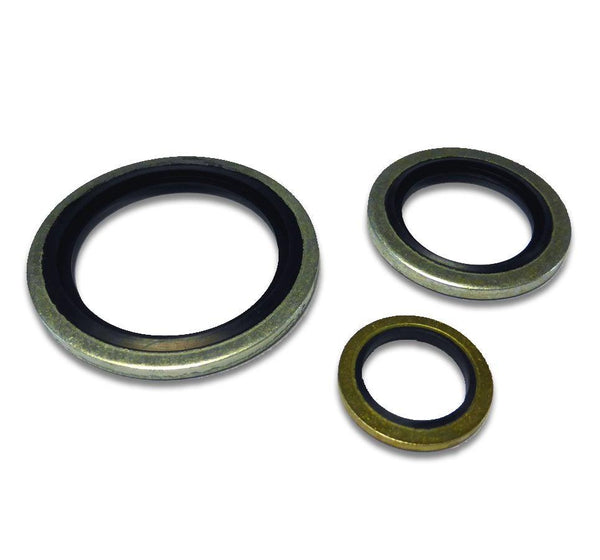
How to store rubber components safely

To maintain the service life of rubber components in stock, you must control the environment in which they are stored. These must function when used as a spare part.
Examples of components that can be critical in a process are o-rings, seals in rubber or vulcanized with metal, bearings, shaft seals, gaskets, membranes and bellows.
Many types of rubber (Disclaimer)
There will be many different opinions about what rubber material is. Typical varieties are natural rubber with and without additives to achieve chemical resistance or hardness, silicone rubber, polyurethane compounds, epdm and so on. Our guidelines are therefore general. Reference must always be made to the supplier's specifications. ISO2230 and ARP5316 provide international guidelines for storage. Here you will also find tables with the recommended maximum storage time.
Environmental factors
TemperatureYou can safely store rubber between 10 and 22° C. As for organic materials, cooler is better. At very low temperatures, the rubber will harden and require heating before it can be used. Never store rubber near stoves or other heat sources
Moisture
Rubber parts break down if they are stored in too high or too low relative humidity. Keep RH below 70% and avoid condensation. Do not store rubber in artificially dry environments, together with silica gel or with dehumidifiers.
Oil, solvent and corrosive liquidsAvoid all of these liquids. Oil resistance is a fluid term. Many perceive e.g. neoprene rubber as oil resistant, but it has far worse oil resistance than e.g. nitrile rubber.
As with oil and liquids, there is reason to expect the rubber surface to age because gases in the environment react with oxygen or other ions. Therefore, you should also not store different types of rubber in the same container/bag unless you are sure.
OzoneAvoid environments with high ozone content. Rubber is broken down by ozone. Ozone gas occurs naturally in the air as a result of lightning and sun rays and therefore cannot be removed easily. However, store away from equipment that can generate ozone. Equipment that creates ozone is typically water and air purifiers, but also ordinary electric motors. The smell of sparks is often something we associate with ozone.
Sunlight, UV and other radiation
Ultraviolet radiation (UV) from sunlight quickly breaks down rubber. Rubber parts should be stored in the dark or in packaging that filters out UV rays. Store away from other sources of radiation.
Biological
Mice love to gnaw on rubber. Some insects too. And even if they do not eat the rubber directly, they will excrete acids, for example through urine, which can have a very harmful effect on the rubber. Also avoid mold formation.
MechanicalRubber parts should not be stored under pressure or other influences that could deform the part.
MetalsMetals such as manganese, copper alloys and iron can damage rubber. A layer of paper or PE plastic protects against these.
PowderRubber can be covered with white powder, or even excrete the powder which is often a residue from the vulcanization process. The purpose of the powder may be to protect against dry rot or to separate the rubber layer. The powder can be left on during storage.
Studies surprisingly show that the rubber's storage conditions are more important than its age.
So how do you store rubber?
Once you've thought through and taken away the environmental factors mentioned above, it's really quite straightforward, and you're ready to choose the material for packaging.
UV packaging
The best way to prevent UV light is with suitable packaging, although a dark room will go a long way. Please note that there is a difference between UV plastic and UV protective plastic. The first protects itself by not breaking down and crumbling in the sunlight. BUT it does nothing to protect what is under the plastic. Most of the UV rays go straight through. This applies even if the plastic is black. UV-filtering plastic has added filter material. They are typically smoke- or amber-coloured, but many variations occur.


Polyethylene plastic bags or foil are common for storing rubber. Preferably in variants such as paper bags with plastic inner lining or cardboard with plastic inside. Press out excess air, seal thoroughly, preferably with ziplock bags.


Protected from the environmental factors


